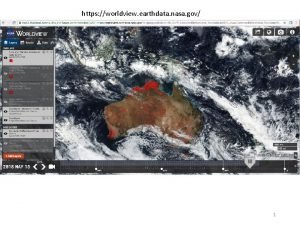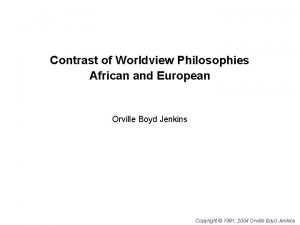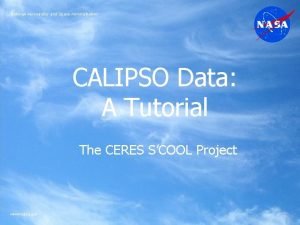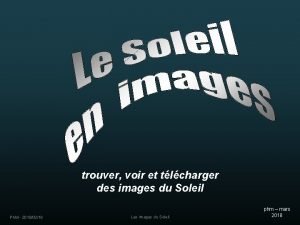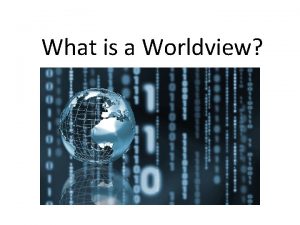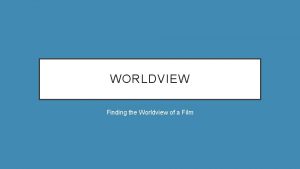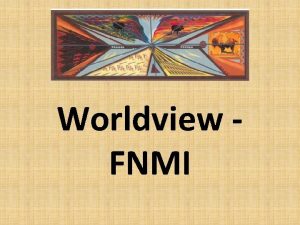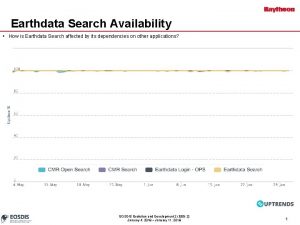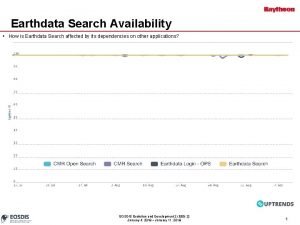https worldview earthdata nasa gov 1 Caveats to






- Slides: 6

https: //worldview. earthdata. nasa. gov/ 1

Caveats to consider when using data from FIRMS 1. What is the difference between NRT and Standard quality fire data? The key difference is geolocation. NRT fire products are expedited – to facilitate this predicted geolocation is used. For MODIS difference between NRT and standard geolocation for fire/hotspot data is routinely less than 100 meters. However, there are situations, particularly before and after spacecraft maneuvers and during space weather events, when the difference can increase up to several kilometers. The recommendation from EOSDIS is to use standard data as it becomes available.

Caveats to consider when using data from FIRMS 2. How appropriate are the hotspot/fire locations for my research? The MODIS and VIIRS fire locations are good for: - determining the location of active fires, - providing information on the spatial and temporal distribution of fires and - comparing data between years. The data do not provide information on cloud cover or missing data. It is sometimes possible to derive misleading or even incorrect results by ignoring the other types of pixels. In some cases it is more appropriate to use one of the Level 3 or CMG fire products. Which data should I use? • I want to know as soon as a fire is detected in my area FIRMS NRT alerts FIRMS Fire Map 24 hour CSV / SHP /KML files • I want to compare fires between years Standard data - MCD 14 ML from FIRMS Download Archive / UMD • I want to do research and publish my findings Standard data – it is not advised to use NRT data for science publications For regional / global modeling use the Climate Modelling Grid (CMG) products from University of Maryland (http: //modis-fire. umd. edu/). Gridded statistical summaries of fire pixel information intended for regional and global modeling

Caveats to consider when using data from FIRMS 3. What is the detection confidence? - intended to help users gauge the quality of individual active fire pixels. - should be used with caution; it is likely that it will vary in meaning in different parts of the world. Nevertheless some of our end users have found such a field to be useful in excluding false positive occurrences of fire - MODIS: values ranges between 0% and 100% and can be used to assign one of the three fire classes (low-confidence fire, nominal-confidence fire, or highconfidence fire) to all fire pixels. - VIIRS: For VIIRS the confidence values are set to low, nominal and high. - Low confidence daytime fire pixels are typically associated with areas of sun glint and lower relative temperature anomaly (<15 K) in the midinfrared channel I 4. Nominal confidence pixels are those free of potential sun glint contamination during the day and marked by strong (>15 K) temperature anomaly in either day or nighttime data. High confidence fire pixels are associated with day or nighttime saturated pixels. The confidence value is application specific. Unfortunately there's no way to establish an optimal cutoff a priori. Users have to adopt an empirical approach -- what threshold works best for what I'm trying to do?

Caveats to consider when using data from FIRMS 4. Can I use active fire to map burned areas? It is not recommended due to spatial and temporal sampling issues. For some applications acceptable accuracy can be achieved although the effective burned area per pixel is not simply a constant. See the FAQs / MODIS burned area product http: //modis-fire. umd. edu/pages/Burned. Area. php MODIS Collection 6 Burned Area Products MCD 64 A 1 500 -m Monthly MCD 64 A 1 -based GIS Products (SCF) Shapefiles + 500 -m Geo. TIFF MCD 64 CMQ (SCF) 0. 25° Monthly MCD 64 CDQ (SCF) 0. 25° Daily

For more information For the most current information use the Active Fire User's Guide - VIIRS - MODIS Collection 6 - Links at: https: //earthdata. nasa. gov/firms-faq#ed-user-guides FIRMS FAQs - https: //earthdata. nasa. gov/firms-faq Thank you for listening!
